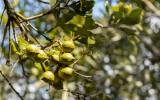Where Do Pistachio Trees Grow? (Best Growing Zone)
Pistachio trees, known for their tasty and nutritious nuts, have specific growing requirements that limit their cultivation to certain areas. These trees are native to Central Asia and the Middle East, with Iran and Afghanistan being central to their distribution. Furthermore, their preference for hot, dry summers and cold winters influences their ideal growing conditions.
The best growing zones for pistachio trees are USDA hardiness zones 7 to 11, with zones 8, 9, and 10 being particularly well-suited for their growth. Pistachio trees thrive in Mediterranean climates, characterized by hot, dry summers and mild winters. Well-drained soil is essential, along with sunlight and irrigation.
Pistachio trees flourish in hot, dry climates, meaning areas with cooler temperatures or higher humidity might necessitate fewer trees per acre. They require adequate space for optimal growth, with planting density influenced by the tree variety, local climate, and orchard size.
Summary
- Pistachio trees are native to Central Asia and the Middle East, requiring specific growing conditions.
- It's important to match the pistachio trees to the regional climate and soil conditions for successful cultivation.
- The best USDA hardiness zones for growing pistachio trees are 7 to 11, with 8, 9, and 10 being particularly favorable.
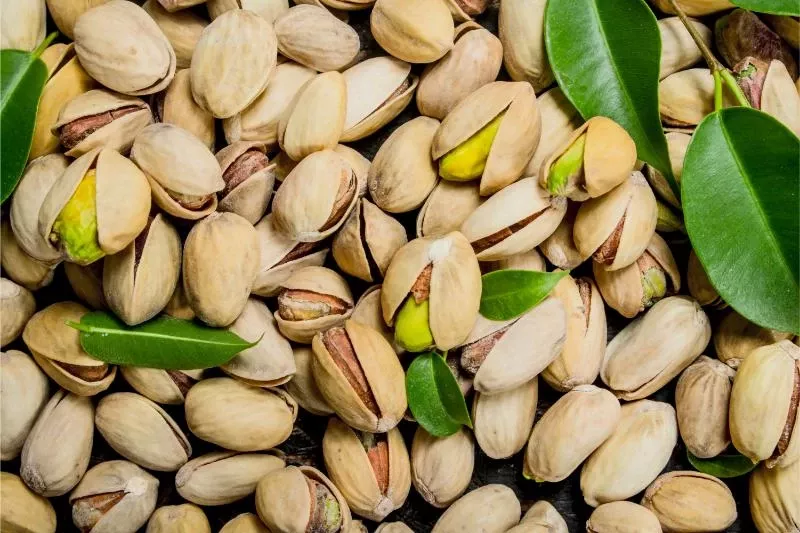
On this page:
Best Growing Zones for Pistachio Trees
Here's a table that outlines the best growing zones for pistachio trees and the factors that make these zones ideal. This table synthesizes information about climate conditions, soil preferences, and other specific requirements for successful pistachio cultivation.
| USDA Hardiness Zone | Region Examples | Climate Conditions | Soil Preferences | Additional Notes |
|---|---|---|---|---|
| 7-11 | California, Arizona (USA) | Arid, hot climate | Prefer sandy loam soils with high calcium carbonate (CaCO₃) content; do not tolerate wet, heavy soils | Ideal in desert gardens and orchards; winter temperatures should not fall below 5°F; at least 850 hours of warmth needed |
| 7-11 | Greece, Turkey (Mediterranean) | Moderate climate | Well-drained, calcareous, and boric soils of medium texture; slightly acidic, alkaline or saline soils are tolerable | Mediterranean climates provide the necessary balance of warm summers and cool winters for pistachio trees |
| 7-11 | Iran, Afghanistan | Cold climate | Same soil preferences as above | Can withstand cold winters, but require protection from extreme frost, especially young trees |
- Growing zones: USDA Hardiness Zones 7-11 are optimal for pistachio trees, with the best zones being 8, 9, and 10.
- Climate needs: These trees flourish in hot, dry climates with sufficient winter chill hours. They do not do well in regions with too much rain or humidity. Winter chilling (temperatures between 0 to 7 degrees Celsius) is essential for breaking dormancy.
- Cold tolerance: They can withstand winter temperatures as low as -10 degrees Celsius, but young trees are more susceptible to frost damage.
- Soil requirements: Pistachio trees prefer sandy loam soils with good drainage and a high concentration of calcium carbonate. They can adapt to a variety of soil types but do not tolerate wet or heavy soils.
- Regional adaptability: Each of these regions offers a unique set of conditions that are conducive to growing pistachios. For instance, the arid and hot climate of California and Arizona's desert regions provide the necessary conditions for pistachio trees to thrive.
Optimal soil types
- Texture: Well-drained, sandy-loam soils are ideal for pistachio trees. They do not tolerate heavy, clay soils or soils with poor drainage.
- pH Level: These trees prefer soils with a pH range of 7.1 to 7.8, indicating a slight preference for alkaline conditions.
- Salinity tolerance: Pistachios show a relatively high tolerance to saline soils compared to other nut trees.
Temperature and precipitation needs
- Temperature range: The optimal temperature range during the growing season is between 35 to 38 degrees Celsius. They need hot weather during the summer to ensure proper nut development.
- Winter chill requirement: About 600 to 1,500 cumulative hours of winter chill (below 7 degrees Celsius) are necessary for good cropping.
- Drought tolerance: Pistachios are drought-tolerant once established but require regular, deep watering during the growing season for optimal nut production.
- Precipitation: While they can survive on as little as 15 inches of annual rainfall, supplementary irrigation is often needed in dryer areas to ensure sufficient water supply during the critical nut development stages.
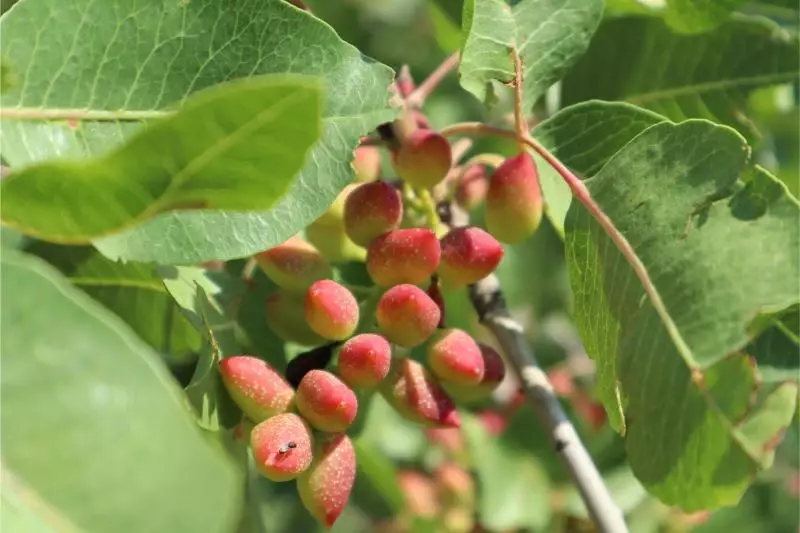
Optimal zones for commercial cultivation
The ideal climate for pistachio tree growth and commercial cultivation is found in zones 8, 9, and 10. These zones offer the perfect combination of hot, dry summers and cold winters, which pistachio trees need to thrive and produce a healthy yield. In the United States, California, Arizona, and New Mexico are the primary states for commercial pistachio production, with California accounting for about 95% of the total US production.
To successfully grow pistachio trees in these zones, it is important to consider factors such as:
- Winter temperatures should not fall below 5°F.
- Your trees must receive at least 850 hours of warmth.
- Proper irrigation is essential, as pistachio trees need water during certain periods of their growth cycle.
Secondary zones with potential
Some promising secondary zones include:
- Parts of Texas, due to its relatively hot and dry environment.
- The Mediterranean region, where pistachio trees are known to grow well in countries like Italy, Greece, and Spain.
- Iran is a significant producer of pistachios, providing ideal climate conditions for growing pistachios.
In addition to the optimal zones for commercial cultivation, there are secondary zones where pistachio trees might grow successfully on a smaller scale. These zones may not be ideal for large-scale commercial production, but they could still be suitable for hobbyists or small-scale growers.
Even in these secondary zones, the key factors still apply: sufficient warmth, cold winter temperatures, and appropriate irrigation are essential for successful pistachio tree growth.
Additional considerations
- Wind protection: Pistachio trees benefit from wind protection, as strong winds can damage the tree and its fruit.
- Pollination: These trees are dioecious, meaning there are separate male and female trees. Adequate pollination requires planting both.
- Longevity: They are long-lived trees, often productive for more than a century, making their cultivation a long-term investment.
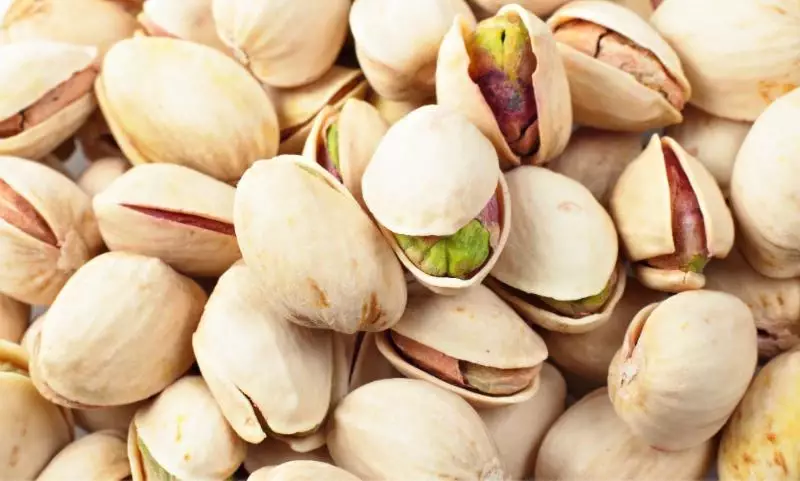
The Global Distribution
- Middle East and Central Asia: These regions are the native habitats for pistachio trees, offering arid conditions and hot temperatures.
- Western USA: California, Arizona, and New Mexico are hotspots for pistachio cultivation, with California being the major producer in the United States.
- China, India, and Italy: These nations have embraced the growth of pistachio trees, providing suitable climates and encouraging cross-pollination for better yield.
Pistachio trees are native to the Middle East and Central Asia but have expanded their reach to various regions around the globe. They require hot, dry environments and are somewhat limited in their ability to adapt to other climates. However, within these preferred growing zones, pistachio trees thrive and continue to be a popular and beloved nut worldwide.
Outside of the US, pistachio trees have made their way to several countries. You can find them across China, India, and Italy. These countries not only provide the necessary climate conditions but also promote cross-pollination by planting multiple trees, ensuring a healthy production of nuts.
Climatic Requirements
To grow healthy pistachio trees, remember the following points:
- Hot summers and non-freezing winters (USDA zones 7b to 10b)
- Well-draining sandy loam with alkaline pH (7.1 to 7.8)
- Full sun exposure
- Altitude up to 3,300 feet
- Watch out for dry winds and cold, wet spring weather
Pistachio trees thrive in an environment where summers are hot, with temperatures reaching 100 degrees Fahrenheit or above, and winters are mild and non-freezing. They are most suited to the dry parts of USDA zones 7b to 10b2, which experience winter lows ranging from 5 to 40°F. These climatic requirements can determine the success or failure of your pistachio tree.
Apart from temperature, another significant factor that affects pistachio trees' growth is the quality of the soil. Ideally, they require deep, well-draining sandy loam. While pistachios can tolerate infertile, rocky, or even salty soil, providing them with alkaline conditions (pH between 7.1 and 7.8) can result in better harvests.
It is vital to plant your pistachio trees in locations with full sun exposure. Additionally, they can grow well at altitudes up to 2,200 feet, with some even thriving at 3,300 feet. Fortunately, spring frosts during the flowering period usually don't harm these trees, as they bloom late. However, you should keep an eye out for dry winds and cold, wet weather in spring, as these conditions can affect pollination and reduce fruit set.
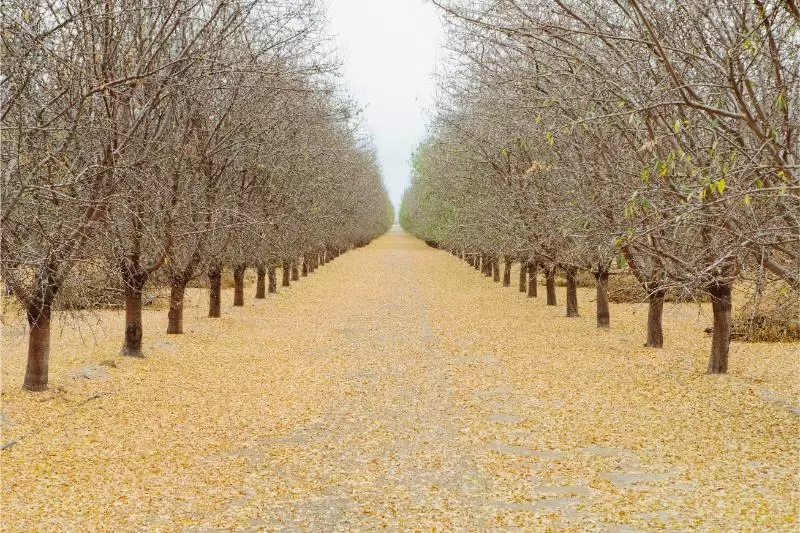
Ideal Soil Conditions for Pistachio Cultivation
- Soil type: Deep, light, dry, and sandy loam soils with high calcium carbonate (CaCO3) concentration
- Soil pH: Slightly alkaline (7.1 to 7.8)
- Drainage: Well-drained soil is necessary; avoid wet, heavy soils
- Soil depth: Adequate depth to accommodate the tree's extensive root system
Growing pistachio trees requires certain soil conditions to ensure their healthy growth and bountiful nut production. The first thing you need to know is that pistachio trees thrive in deep, light, dry, and sandy loam soils with high calcium carbonate (CaCO3) concentrations. This type of soil allows for proper root development and drainage, which helps the tree establish itself and grow efficiently.
In addition to their preference for sandy loam, pistachio trees can also tolerate slightly acidic, alkaline, or salinity-rich soils. However, they do not do well in wet, heavy soils or those that lack adequate drainage. To ensure the best growth conditions for your pistachio tree, it's essential to aim for a soil pH range of 7.1 to 7.8, which is considered slightly alkaline.
When it comes to soil depth, pistachio trees need ample space to develop their substantial root systems. These trees can grow up to 30 feet tall, with taproots just as long. Therefore, you must choose a location with enough soil depth to accommodate the tree's root structure.

Challenges in Growing Pistachio Trees
Growing pistachio trees can be challenging due to their specific environmental requirements. One of the main challenges you'll face is finding the right climate. Pistachio trees thrive in areas with hot, dry summers and cold winters. They typically grow well in USDA hardiness zones 8 to 10, which include regions like Arizona, New Mexico, and Southern California.
Temperature requirements: Pistachio trees need temperatures above 100 ℉ during the day in summer, and around 45 ℉ or below in winter to send them into dormancy. Ensure that your location meets these temperature requirements to successfully grow pistachios.
Watering requirements: These trees prefer semi-arid conditions and receive little to no rainfall. Overwatering can cause root rot and other diseases. You should provide enough water to keep the soil slightly moist, but not wet. Remember, adequate drainage is essential for healthy pistachio trees.
Here are some common challenges you may face when growing pistachio trees:
Pest management
Several pests can attack pistachio trees, such as navel orangeworm, leaf-footed bugs, and mites. Regularly inspect your trees and take appropriate measures to control these pests.
Disease control
Pistachio trees are susceptible to diseases like verticillium wilt, botryosphaeria panicle, and blight. Ensure proper sanitation around your tree, and consider using organic or chemical fungicides if necessary.
Pollination requirements
Pistachio trees require cross-pollination from a male tree to produce fruit. Make sure to plant at least one male tree for every 8 to 12 female trees to ensure adequate pollination.
Patience
Pistachio trees take time to start bearing fruit—generally, 5 to 7 years after planting. Don't be discouraged by the wait, and be patient with your trees.

